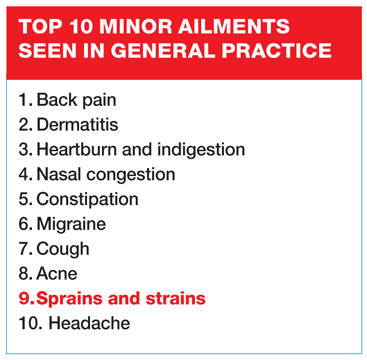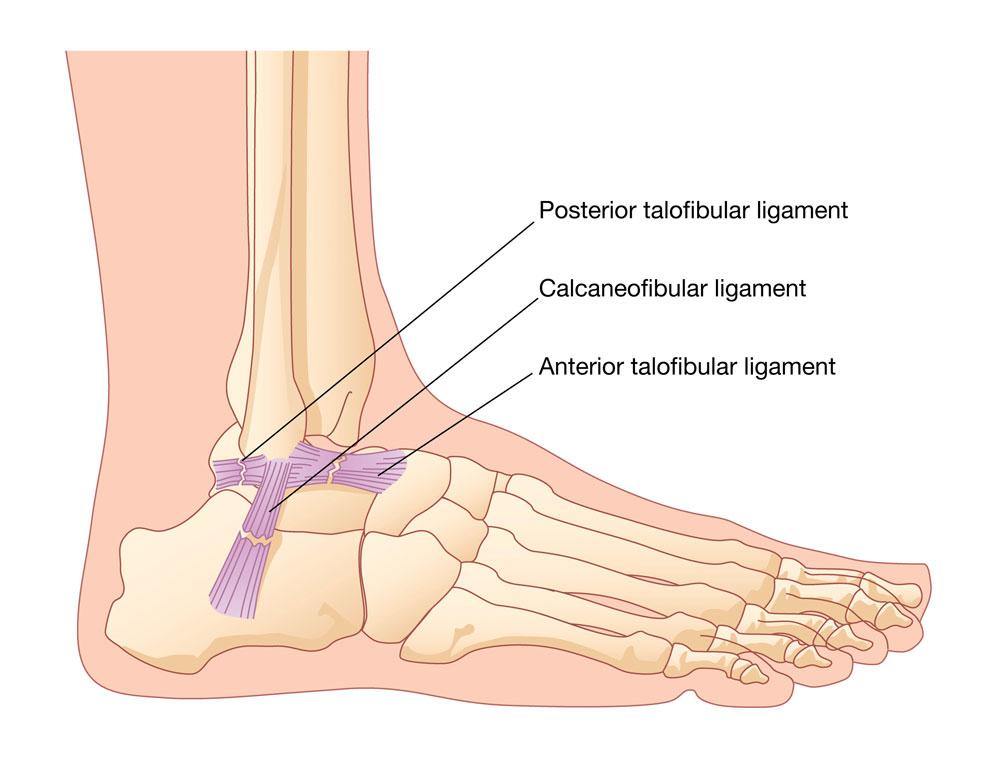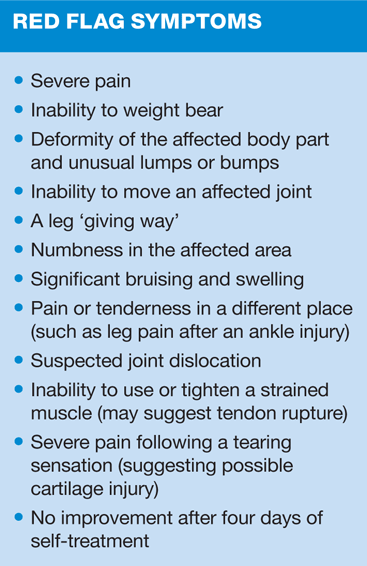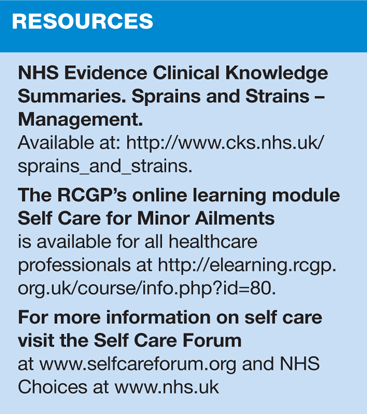Self care for minor ailments: Strains and sprains
Dr Knut Schroeder FRCGP
Dr Knut Schroeder FRCGP
GP, Concord Medical Centre, Bristol, and Honorary Senior Clinical Lecturer in Primary Health Care, University of Bristol
Self Care Forum Board member and author of ‘Diagnosing Your Health Symptoms For Dummies’ &
Sara Richards RN
Specialist Primary Care Nurse,
Practice Nurse Facilitator, Berkshire
Self Care Forum Board member
A total of 2.2 million consultations are made each year for sprains and strains. At a cost of £12.1 million to the NHS, these can often be managed through simple self care measures
WHAT ARE SPRAINS AND STRAINS?
Sprains and strains are injuries affecting ligaments and muscles. Sprains are due to injuries to ligaments, most often those in the thumb, wrist, ankle and knee. Strains are the result of over-stretching or tearing muscle fibres. Strains and sprains are common in the legs and lower back, particularly in people who participate in sports but who are unfit or show poor sporting techniques. Fatigue and inadequate warm-up increase the risk of soft tissue injuries. Typical symptoms of sprains include pain around a joint, swelling, tenderness, and an inability to use the joint normally. Swelling often occurs almost immediately, whereas the onset of bruising may be delayed – if it happens at all. Muscle strains usually cause muscle pain, which may occur together with swelling, bruising, reduced function and muscle spasms.
HOW COMMON ARE THEY?
Sprains and strains are common, but often go unreported. Ankle sprain is the most common type of sprain, often due to sports, and results in about 1 to 1.5 million Emergency Department (ED) visits in the UK each year.
WHAT CAN PATIENTS EXPECT?
Most sprains and strains are self-limiting and usually resolve within six to eight weeks, depending on the location and severity of the injury. People can usually return to full sporting activities at around 12 weeks. Some severe injuries, particularly those of the major leg muscles, may take several months to heal. Most sprains and strains do not require further investigation.
WHAT CAN PEOPLE DO TO HELP THEMSELVES?
Various self-help measures are available to manage sprains and strains. Protection, Rest, Ice, Compression and Elevation (PRICE) are useful for the initial management. Advise patients to avoid Heat, Alcohol, Running (or any other form of exercise) and Massage (HARM) in the first 72 hours after an injury.
Range of motion (flexibility) exercises should be started as soon as pain allows after a sprain. People should not immobilise the affected joint, except in severe ankle sprains, where immobilisation can lead to a quicker recovery. In strains, however, keeping the affected muscle still for a few days after the injury is beneficial before starting to mobilise the affected body part again. Advise patients to do stretching and strengthening exercises and to wear appropriate footwear when taking part in sports, at home and at work.
WHICH OTC PREPARATIONS CAN PEOPLE USE?
Paracetamol is a suitable first-line treatment for strains or sprains, and can be taken combined with low-dose codeine if paracetamol alone is not strong enough (codeine-only products or higher strength codeine combinations are only available on prescription). Oral non-steroidal anti-inflammatory drugs (NSAIDs) are useful for reducing swelling and inflammation for 48 hours after the injury has occurred. Ibuprofen should be avoided in people with a history of aspirin-sensitive asthma, kidney disease, stomach problems or peptic ulcer. Topical NSAIDs, such as ibuprofen or diclofenac cream or gel can also be effective.
WHEN SHOULD PATIENTS RETURN?
Patients should seek further medical advice if they have suffered a severe sprain or strain that may suggest fracture or dislocation (see ‘red flags’ box), if pain is not controlled by OTC medication, or if the condition does not improve as expected.
WHAT ARE THE NEXT STEPS?
Next steps include a detailed history and examination by a health professional. X-rays may be indicated in people who are unable to weight bear, show bone tenderness, or have difficulty moving their knee (particularly people over the age of 55). Referral to an ED or orthopaedic specialist may sometimes be necessary.
SUMMARY
Sprains and strains are common and in most cases self-limiting. Various OTC preparations are available for effective self care. The presence of red flags should prompt urgent medical assessment.
Related articles
View all Articles




